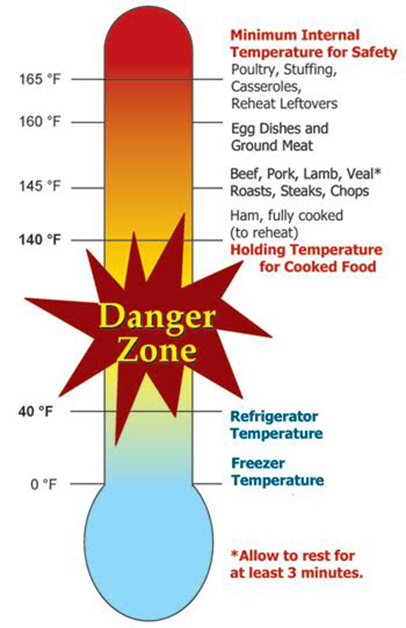Food Safety education month
Labor Day often signals the end of summer for many in the United States, and the end of summer vacation for children of all ages. It is always the perfect time for friends and family to pause and spend some time together before heading back to work or a busy school schedule.
But if people aren’t careful and follow food safety basics, getting back to school or work could be put in jeopardy by food poisoning.
Cooling and packing food

Most foods that are prepared for outdoor gatherings are not properly cooled, according to public health officials. Not cooling just-cooked food quick enough allows harmful bacteria to multiply rapidly. Once cooked food has been properly cooled, it should be placed in a shallow container for immediate refrigeration until it is packed for transportation
Washing fruits and vegetables
Commonly forgotten, cutting through the peels and rinds of fruit, such as apples or melons, can transfer bacteria into the flesh of the fruit. All fruits and vegetables to be served raw should be washed before they are cut. The cut produce should be refrigerated in waterproof containers or plastic wrap to cool down before going into the picnic cooler.
Cooler location
Once foods reach their destination, they are often left to sit out in warm temperatures for too long. It’s a good idea to put coolers in the passenger area of a car rather than the trunk where temperatures are usually higher. Once the cooler reaches the picnic site, place it in the shade with a blanket over the top and keep the cooler closed until it’s time to eat.
Cold foods cold, hot foods hot
Cold foods should be kept cold and hot foods should be kept hot to reduce the chance of bacteria and other pathogens multiplying. Ice and frozen gel packs are a necessary addition to coolers and insulated storage containers. To keep foods hot, the USDA recommends filling heat-safe, insulated containers with boiling water. After letting the boiling water stand for a few minutes, empty it out and replace with hot soup, chili or stews. These containers should remain closed or covered until it’s time to eat.
Handling food and handwashing
The more hands that handle the hamburgers, hotdogs, salads and other foods, the more possibility for contamination. People that handle food from preparation to plate should always thoroughly wash their hands to avoid the spread of bacteria. If running water is not available at your outdoor meal, hand sanitizers and paper towels should be used liberally, but they are not as effective. Use the sanitizer and wipe hands with clean paper towels. Then use the sanitizer a second time and let your hands air dry.
Utensils and dishes should be plentiful to avoid cross-contamination from preparing meat, poultry or fish on the same dish before and after cooking. Disposable plates and utensils are a great option if dishes cannot be washed in between preparation and completion of cooking.
PRO Grilling
You can reduce and avoid foodborne illnesses from cooking meat or poultry on the grill by following these three tips from the USDA.
- P — Place the Thermometer
When you think your food is cooked, check the internal temperature by inserting the thermometer into the thickest part of the meat, usually about 1.5 to 2 inches deep. If you are cooking a thinner piece of meat, like hamburger patties, insert the thermometer from the side. Make sure that the probe reaches the center of the meat.
- R — Read the Temperature, in due time
Wait about 10 to 20 seconds for an accurate temperature reading. Use the following safe internal temperature guidelines for your meat and poultry.
- Beef, Pork, Lamb, and Veal (steaks, roasts, chops) and Fish: 145 degrees F (63 degrees C) with a 3-minute rest time.
- Ground meats: 160 degrees F (71 degrees C)
- Whole poultry, whole and cut pieces of poultry, and ground poultry: 165 degrees F (74 degrees C)
- O — Off the Grill
Once the meat and poultry reach their safe minimum internal temperatures, take the food off the grill and place it onto a clean platter. Don’t put cooked food on the same platter that held raw meat or poultry. Also, remember to clean your food thermometer probe with hot, soapy water or disposable sanitizing wipes between uses.
(To sign up for a free subscription to Food Safety News, click here.)

